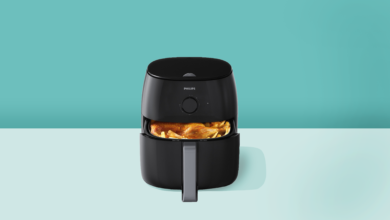How to Type Faster on Phone: Speed Up Your Texting

Introduction
how to type faster on phone In our fast-paced digital world, typing quickly on a phone is more than a convenience—it’s a necessity. Whether you’re sending a quick text to a friend, drafting an email, or updating your social media status, speed and efficiency are key. This guide will explore practical strategies to enhance your typing speed on mobile devices, offering insights into the nuances of phone keyboards, techniques to boost your typing speed, and tools that can make the process smoother. By the end of this article, you’ll be equipped with actionable tips to transform your typing skills.
how to type faster on phone
1.1. The Evolution of Mobile Typing
Mobile typing has come a long way since the days of T9 keyboards. The transition from physical keypads to touchscreens has revolutionized how we type on our phones. Initially, T9 predictive text was a groundbreaking innovation, allowing users to type more quickly by predicting words based on their keystrokes. Today, most smartphones use touchscreens with virtual keyboards that support a range of typing techniques, from swipe gestures to voice input.
The shift to touchscreen typing introduced new challenges. While it offers a sleek, customizable interface, it also requires a different skill set compared to physical keyboards. Users must adapt to the lack of tactile feedback and the varying sizes of virtual keys. This evolution has made typing on phones more versatile but also more complex, necessitating a new approach to mastering speed and accuracy.
1.2. Anatomy of a Phone Keyboard
Understanding the layout and functionality of your phone’s keyboard is crucial for improving typing speed. Most mobile keyboards feature a QWERTY layout, designed for ease of use and familiarity. However, the compact size of the keys on a phone can make typing more challenging, especially for those with larger fingers.how to type faster on phone Some keyboards offer variations, such as compact layouts or split keyboards, to accommodate different typing styles and preferences.
Additionally, mobile keyboards often include additional features such as predictive text, emoji suggestions, and voice input. Familiarizing yourself with these features and how they can be used to enhance typing efficiency is essential. For instance, predictive text can help speed up typing by suggesting words as you type, while voice input can be a useful alternative when typing on a small screen.
1.3. Common Typing Challenges on Phones
Typing on a phone presents several unique challenges. One of the most common issues is the trade-off between speed and accuracy. The small size of the screen can make it difficult to hit the correct keys, leading to frequent typos and the need for corrections. Another challenge is the lack of tactile feedback, which can make it harder to gauge typing speed and accuracy.
Additionally, the compact nature of mobile keyboards can lead to discomfort or strain during prolonged typing sessions. Adapting to these challenges requires practice and the adoption of techniques that can help mitigate the limitations of mobile typing. By understanding these challenges and how to overcome them, you can improve your overall typing speed and efficiency.
2. Techniques to Improve Typing Speed
2.1. Mastering Touch Typing
Touch typing, or typing without looking at the keyboard, is a technique that can significantly improve your typing speed on a phone. Unlike physical keyboards, where touch typing involves muscle memory and finger placement, mobile touch typing relies on adapting to the virtual layout and screen feedback. To master touch typing on a phone, start by practicing with simple exercises that focus on accuracy and gradually increase speed.
One effective exercise is to type out common words or phrases repeatedly until you become comfortable with the key placements. Another strategy is to use typing apps that offer practice drills and speed tests. These apps often provide feedback on your typing performance, helping you identify areas for improvement and track your progress over time.
2.2. Utilizing Predictive Text and Autocorrect
Predictive text and autocorrect features are invaluable tools for speeding up typing on a phone. Predictive text suggests words based on the letters you’ve already typed, allowing you to select the correct word with a single tap. This feature can save time and reduce the number of keystrokes required for typing.
To make the most of predictive text, ensure that it is properly configured in your phone’s settings. You can often customize the predictive text feature to better match your typing style and preferences. Additionally, autocorrect can help correct common typing errors automatically, reducing the need for manual corrections and improving overall typing speed.
2.3. Customizing Your Keyboard Settings
Customizing your keyboard settings can greatly enhance your typing speed and comfort. Most mobile devices allow you to adjust key sizes, change keyboard layouts, and enable features like gesture typing. For example, you can increase the size of the keys to reduce accidental taps or switch to a keyboard layout that better suits your typing style.
Gesture typing, also known as swipe typing, is another customization option that can improve speed. This technique involves sliding your finger from one letter to another, forming words without lifting your finger off the screen. Many users find gesture typing faster and more efficient than traditional tapping, making it a valuable feature to explore.3. Tools and Apps to Enhance Typing Speed
3.1. Best Typing Apps for Android and iOS
Several apps are available to help improve your typing speed on both Android and iOS devices. Some of the top-rated typing apps include SwiftKey, Gboard, and Fleksy. These apps offer a range of features designed to enhance typing efficiency, such as customizable keyboards, predictive text, and gesture typing.
SwiftKey, for example, is known for its advanced predictive text capabilities and personalized suggestions based on your typing habits. Gboard offers a variety of keyboard layouts and seamless integration with Google services. Fleksy is praised for its speed and customization options, including the ability to create custom keyboard shortcuts. Exploring these apps and finding the one that best suits your needs can make a significant difference in your typing speed.
3.2. Keyboard Shortcuts and Customizations
Creating and using keyboard shortcuts is another effective way to boost typing speed. Shortcuts allow you to quickly insert commonly used phrases, email addresses, or other text snippets with just a few keystrokes. For example, you can set up a shortcut to automatically expand “omw” into “On my way!” This not only saves time but also reduces the likelihood of typing errors.
Customizing your keyboard layout can also improve typing efficiency. Many mobile keyboards allow you to rearrange keys or switch to different layouts based on your preferences. Experimenting with these customizations can help you find the setup that works best for you and enhance your overall typing experience.
3.3. Using Typing Games and Exercises
Typing games and exercises can be a fun and effective way to improve your typing speed. Many apps and online platforms offer typing games that challenge you to type as quickly and accurately as possible. These games often provide feedback on your performance, helping you identify areas for improvement and track your progress.
Incorporating typing exercises into your daily routine can also help build your typing skills. For example, you can practice typing random words or sentences to improve accuracy and speed. Over time, these exercises can help you become more comfortable and efficient with mobile typing.
4. Practice Strategies for Faster Typing
4.1. Setting Up a Typing Practice Routine
To see significant improvements in your typing speed, it’s important to establish a consistent practice routine. Aim to practice typing for a few minutes each day, focusing on both speed and accuracy. Setting specific goals, such as increasing your words per minute (WPM) or reducing typing errors, can help you stay motivated and track your progress.
Consider using typing apps or online tools that offer structured practice sessions and track your performance. Regular practice, combined with targeted exercises and feedback, can help you develop muscle memory and improve your typing speed over time.
4.2. Incorporating Typing Challenges
Participating in typing challenges can add an element of fun and competition to your practice routine. Many online platforms and typing apps offer typing challenges that pit you against other users or provide timed tests to gauge your performance. Engaging in these challenges can help you push your limits and improve your typing skills in a motivating environment.
You can also create your own typing challenges by setting personal goals or competing with friends and family. For example, you might challenge yourself to beat your previous typing speed record or see who can type a given passage the fastest. These challenges can help you stay engaged and committed to improving your typing speed.
4.3. Analyzing Your Typing Speed and Accuracy
Regularly analyzing your typing speed and accuracy is crucial for identifying areas of improvement. Many typing apps and online tools provide detailed statistics on your performance, including your WPM, accuracy rate, and error types. Reviewing these statistics can help you pinpoint specific issues and focus your practice on areas that need the most attention.
Additionally, consider using typing tests that simulate real-world typing scenarios, such as composing emails or writing social media posts. These tests can provide a more accurate assessment of your typing skills and help you prepare for various typing tasks you may encounter in your daily life.
Conclusion
Improving your typing speed on a phone requires a combination of understanding the basics, adopting effective techniques, utilizing the right tools, and consistent practice. By mastering touch typing, leveraging predictive text and autocorrect, customizing your keyboard settings, and using typing apps and games, you can significantly enhance your typing efficiency.
Remember, the key to becoming a faster typist is practice and perseverance. With the strategies and tools outlined in this guide, you’ll be well on your way to typing faster and more accurately on your phone. Embrace the process, stay motivated, and watch your typing skills soar.





